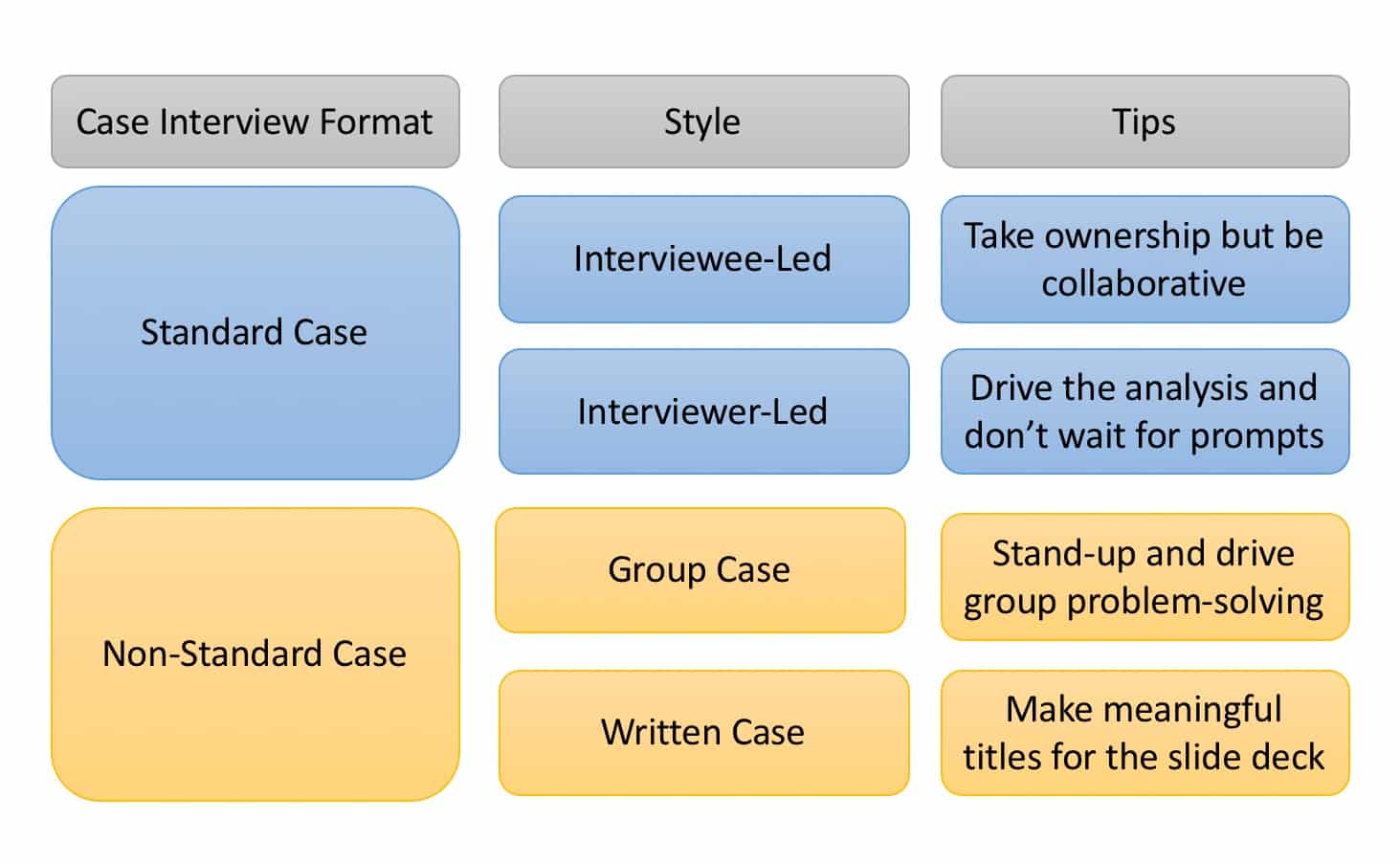This post will mainly focus on introducing the case interview format, and an overview of several key formats that are typically used. You may wonder, shouldn’t the format always be the same? No, there are different formats for the case interview, in other words different setups.
Standard Format
The standard format is a one-on-one case interview.
With this format, there are two styles: interviewee-led and interviewer-led.
The interviewee-led style is the most common style where candidates are given a case prompt and then asked to lead the whole case process. In the interviewee-led style, the interviewer is just a virtual client who will only answer your questions and then wait for your solution to the problem. The reason that this style is used most often is that it simulates the real client engagement situation quite closely.
The second style is interviewer-led. The interviewer-led style is similar to the first style where candidates are given a prompt then start the case. However, the difference is that the interviewer will interrupt candidates from time to time to shift gears. For instance, when a candidate has broken down the issue into 3 parts, let’s say, customer, company and product. The interviewer would say. ‘Oh, that sounds reasonable, why don’t we focus on customers. What can our client do to increase customer satisfaction?’ A while later, the interviewer may ask the candidate to focus on the cost implications of his or her suggestion. In short, interviewers in this style act like a senior consultant in the team and want you to give some specific insights in some of the most critical areas of the case.
Remember the 5 steps we talked about in the last post? Regardless of the style, you should always expect those 5 steps to appear.
Non-standard Format
Although the second format is not common, you have to know how it works. It also contains two styles: Group Case and Written Case.
As the name suggests, the Group Case is a case interview with a group of candidates. The group acts like a consulting project team without a leader. Everyone in the group should first seek to make a contribution using typical case skills, like structuring the problem, synthesising key findings, etc. In addition, everyone needs to contribute to the group and strive to utilize each other’s skills and knowledge. It is hard, to be honest, since this style adds another dimension into the game – team work. As you cannot pick your team, or take time to get to know your team members, there is a risk that your team will be dysfunctional, which will significantly impact your performance. Two caveats: don’t try to be an aggressive leader, but also don’t just sit back and wait for others to solve the case.
The second type of non-standard format is the Written Case. It consists of all the normal elements of a case interview, but candidates are given case material in advance. They are required to use the material to prepare a slide deck, which they are required to present during the interview. So, all the hard work of structuring the problem, calculation, and synthesis happens before the interview. During the interview, candidates must act like a consultant standing in front of a client to do a project final report. In addition to normal case interview skills, slide deck writing skills and presentation skills are also heavily assessed in this style of interview. One good suggestion I received to cope with the Written Case is to use story boarding headlines for the slide deck. This simply involves summarizing every slide’s content in the headline, so that if your client does not have time to read the details of each slide, he or she can still get the general idea of your recommendation by simply reading the headlines of each slide.
Regarding how to be successful in all the case interview formats, see a summary of my tips below.
Well, so much for this one. I will take you through some good frameworks in the next post.
See you soon!
Free Download: This guidebook distils all of Mike’s insights on how to achieve success in your journey towards a career in management consulting: download now!
Mike Ni believes that technology is the engine of the future, while business capability is the wheel!
Image: Pexels

